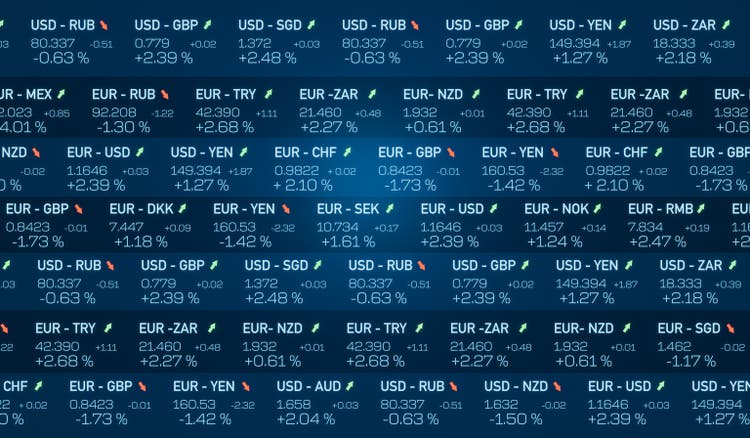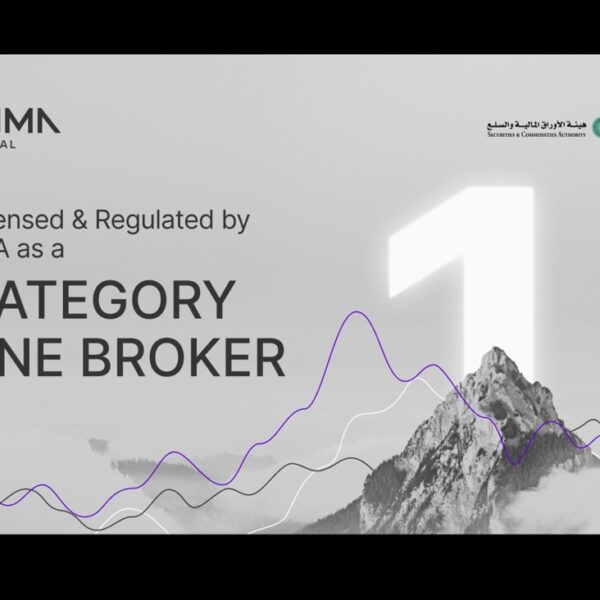Torsten Asmus/iStock via Getty Images
Dear Investors and Friends,
The NZS Growth Equity strategy (“strategy” or “portfolio”) had a gross return of+19.57% and net return of+19.39% for the second quarter as compared to+11.41% for the Morningstar Global Target Market Exposure Index (the “Index”) over the same period.
| PERIODIC RETURNS(%)* | QTD | 1Y(ANN) | 3Y( | ANN) $5^{\circ}$ | (ANN) | SI(ANN) |
|---|---|---|---|---|---|---|
| NZS GROWTH EQUITY(GROSS) | 19.57% | 18.92% | 22. | 30% | 17.11% | 18.51% |
| NZS GROWTH EQUITY(NET) | 19.39% | 18.16% | 21. | 32% 16 | 16.36% | 17.75% |
| INDEX | 11.41% | 15.74% | 17. | 25% | 13.62% | 10.95% |
| DIFFERENCE(% NET) | 7.98% | 2.42% | 4. | $7% | 2.74% | 6.80% |
| CALENDAR YEAR RETURNS(%)* | YTD 2025 | 2024 | 2023 | 2022 | 2021 | 2020 |
| NZS GROWTH EQUITY(GROSS) | 15.45% | 21.24% | 35.29% | -32.99% | 22.64% | 63.51% |
| NZS GROWTH EQUITY(NET) | 15.08% | 20.47% | 34.44% | -33.44% | 21.86% | 62.49% |
| INDEX | 9.91% | 17.20% | 22.13% | -18.04% | 18.57% | 15.83% |
| DIFFERENCE(% NET) | 5.18% | 3.27% | 12.30% | -15.40% | 3.29% | 46.66% |
| *Since inception: January 1,2020;returns as of June 30,2025. |
PERFORMANCE OVERVIEW
Volatility continued in the second quarter of 2025, with a sharp market selloff to start the period and a strong recovery thereafter. The strategy delivered solid returns, and we have been pleased with how the portfolio has acted thus far in 2025.
In the quarter, Information Technology, Industrials, and Communication Services contributed the most to absolute returns. Amphenol (APH), a resilient position, was the strongest contributor. The company’s first quarter earnings significantly exceeded expectations, primarily driven by robust demand for components going into data centers. Amphenol is a multi-decade holding for the NZS team, as its entrepreneurial and decentralized operating structure has historically allowed it to capitalize in volatile environments such as at present. Taiwan Semiconductor (TSM), Cadence, NVIDIA, and Cloudflare (NET) rounded out the top-five contributors.
No sectors detracted from the returns of the portfolio in the quarter. Materials, Real Estate, and Health Care contributed the least. Fiserv (FI) was the top detractor due to a deceleration in growth within their Clover business unit but remains a resilient position as we believe they are well positioned to continue their long-term track record of double-digit earnings growth. Progressive (PGR), Roper (ROP), Danaher (DHR), and BYD (OTCPK:BYDDF) were also among the top-five detractors.
For the year-to-date period ended June 30th, the top-five absolute contributors were Amphenol, Cloudflare, HEICO, Lam Research (LRCX), and MercadoLibre (MELI). The top-five absolute detractors from year-to-date returns were Fiserv, Danaher, Global-e, Alphabet (GOOG), (GOOGL), and Floor & Décor (FND).
PORTFOLIO POSITIONING
Amidst the volatility we observed during the quarter, we added to existing positions in Arm Holdings (ARM), NVIDIA, Danaher, Cadence, and Marvell (MRVL). We introduced Ingersoll Rand (IR), Quanta Services (PWR), and SailPoint (SAIL) as new positions. Ingersoll Rand and Quanta Services have been on our radar as businesses that fit the NZS framework well, and the market volatility provided compelling entry points for these businesses. We owned SailPoint prior to its privatization in 2022 and are pleased to have it back in the portfolio after its re-IPO. We exited our Copart (CPRT) investment, which was a candidate for the resilient part of the portfolio, in favor of adding to Ingersoll Rand. We also sold Microsoft (MSFT) from the portfolio in favor of other more compelling ideas.
The strategy’s resilient weight exiting the second quarter was57%, down from60% entering the year and up from~54% exiting the first quarter. The portfolio remains overweight IT and underweight Consumer, Financials, and Energy. Our IT overweight increased in the quarter due to active portfolio decisions, as we reacted to the outsized weakness in the sector early in the period, and due to IT leading the market recovery during the remainder of the quarter.
A PROCESS FOR VOLATILITY
At NZS, we view the world as a complex adaptive system that is better described by power laws than normal distributions-i.e., it’s unpredictable, subject to frequent shocks and disruptions, and the strongest participants tend to benefit from increasing returns. Given this view, our portfolio construction process ties position sizing to our best assessment of the range of outcomes for a business, as opposed to the typical practice of position sizing tied to “conviction” based on series of narrow predictions of the future. The resilient head of our portfolio is populated with a high-quality set of 15-20 businesses (>2.25% positions) that we believe are aligned to broad secular tailwinds, are adaptable to future disruptions, and are reasonably valued. We then populate the optionality tail with 40 disruptive businesses (<1.75% positions) that have a higher level of asymmetry and thus a much wider range of outcomes. In essence, we try to construct the resilient part of the portfolio to minimize our chances of getting irreparably unlucky, while the optionality tail serves as a large surface area for potentially capturing asymmetry.
If we are fairly successful in picking stocks that meet our criteria for resilient positions and sniffing out unintended correlations at the portfolio level, then the resilient head should provide some ballast in times of heightened volatility, affording us the budget to go shopping when opportunity is presented. We were pleased with how our playbook unfolded in the first half of 2025, with ample opportunities to harvest strong performance from positions in the resilient part of the portfolio and reallocate the capital to opportunities that emerged amidst the volatility.
Lastly, you may note that we use the words luck, fortunate, surprised, etc. often in our writing and in discussions. Accepting that the world is unpredictable, we think, is the first step in
increasing our odds for better investment results. We are sure to see ebbs and flows in performance in future periods, but we are happy with how we have positioned NZS and our partners to take advantage of the luck the market has provided thus far in 2025.
FOCUS POSITION: TOAST- DIGITIZING THE RESTAURANT INDUSTRY
Toast (TOST) combines two of what we believe are among the most compelling business models in the world- vertical market software and payment processing. Toast’s focus is on the restaurant industry, where they started as a cloud-based point-of-sale (POS) system and evolved into a software platform that functions as the operating system of a restaurant. Toast also processes payments for their customers, and we view Toast’s model as one of the most elegant combinations of SaaS and payments in the broader market. Toast is founder-led by Aman Narang, one of Toast’s original three founders, who assumed the role of CEO early last year.
We initiated an optionality position in the summer of 2022. Toast went public at the height of the growth market in November 2021 in a highly anticipated IPO at a demanding valuation; the stock eventually declined~80% peak-to-trough in 2022, creating a compelling entry point. Their platform embodies several aspects we look for in optionality positions- most notably they are taking a digital market that was previously underserved by technology and stuck running legacy, on-premises POS systems. We believe Toast has the opportunity to deploy the classic innovator’s playbook of starting downmarket (SMB restaurants in this case) and moving and moving upmarket. Toast has a clear data advantage via insights into their customers from processing their payments real-time, and they have leveraged those those data to introduce new products, including Toast Capital, a lending platform for SMB restaurants, which has become a meaningful contributor to their gross profits and their customers’ success. Importantly, Toast is a classic example of a company creating a non-zero-sum outcome within their ecosystem; they help their customers run more efficiently and create new revenue streams in a notoriously low-margin and competitive industry, yet they only extract a relatively low toll.
We believe the restaurant and hospitality sector is likely to follow other vertical software markets toward winner-take-most dynamics, where one provider achieves a dominant position. One of Toast’s key differentiators is that its go-to-market model is inherently local. The company builds city by city, using a “boots on the ground” sales approach to gain traction. As each market scales, Toast hits critical mass and builds a local network effect; they receive more inbound leads and referrals, driving a significant boost in sales efficiency. Toast calls these markets “flywheel markets” as they follow a predictable S-curve. Businesses that are driven by local network effects are unique and difficult to disrupt; Toast’s scaling in local markets is reminiscent of the early days of Uber (UBER).
While the initial thesis on Toast centered on their ability to win independent restaurants (their average location has roughly $1M in annual revenue), Toast’s platform has proven optimal for restaurants with multiple locations. As such, we believe that Toast has out-of-the-money optionality in their ability to move into the enterprise market (i.e., larger restaurant chains). Proof points of their ability to move upmarket continue to surface, with the company having announced landmark wins with Marriott (MAR), Top Golf, and, most recently, Applebee’s, where Toast will be deployed across all of Applebee’s 1500 locations nationwide.
Toast’s progress toward profitability continues to exceed our expectations. When we initiated our position nearly three years ago, the company was operating at roughly breakeven. Today, Toast delivers non-GAAP EBITDA margins in the low 30% range1, reflecting both cost discipline and the benefits of scaled flywheel markets. Notably, this profitability has been achieved while continuing to invest heavily in the core platform and in strategic areas such as hospitality, enterprise, and international expansion. Over time, we believe Toast’s profitability profile could resemble that of best-in-class vertical market software companies, with margins exceeding 40%.
CONCLUSION
Thank you for your ongoing support and trust- it fuels everything we do. We’re energized by what lies ahead and looking forward to sharing the journey with you in the months and years to come. We love exchanging ideas and insights with our investors, so please do not hesitate to reach out if you are interested in connecting. As always, we welcome your questions, comments, thoughts, and ideas.
The NZS Team
|
IMPORTANT DISCLOSURES There is no guarantee that the information presented is accurate, complete, or timely, nor are there any warranties with regards to the results obtained from its use. Past performance is no guarantee of future results. Investing involves risk,including the possible loss of principal and fluctuation of value. Gross-of-fees returns are presented before management and custodial fees but after all trading expenses. Composite and benchmark returns are presented net of non-reclaimable withholding taxes. Net-of-fees returns are calculated by deducting a model management fee of 0.0542%, 1/12th of the highest management fee of 0.65%, from the month end gross composite return.The management fee is generally 0.65% per annum, calculated monthly and payable in arrears. Actual fees may vary depending on, among other things, the applicable fee schedule and portfolio size. The fees are available on request and may be found in Form ADV Part 2A. Index performance does not reflect the expenses of managing a portfolio as an index is unmanaged and not available for direct investment and include dividends after the deduction of withholding taxes. Performance data shown represents the NZS Growth Equity Composite, Individual client returns may vary. Please refer to your individual capital account statements, as available, and direct any questions to NZS Capital at [email protected]. The Index refers to the Morningstar Global Target Market Exposure Index. Index returns do not take into account the impact of management fees. One cannot invest directly in an index. Any projections, market outlooks, or estimates in this presentation are forward-looking statements and are based upon certain assumptions. No forecasts can be guaranteed. Other events that were not taken into account may occur and may significantly affect the returns or performance. Any projections, outlooks, or assumptions should not be construed to be indicative of the actual events which will occur. Opinions and examples are meant as an illustration of broader themes, are not an indication of trading intent, and are subject to change at any time due to changes in market or economic conditions. There is no guarantee that the information supplied is accurate, complete, or timely, nor are there any warranties with regards to the results obtained from its use. Top contributors and detractors represent extracted performance of certain holdings for the period. Portfolio returns are discussed at the start of this publication. A full list of holdings and their returns is available to investors upon request. An investor should not construe the contents of this newsletter as legal,tax,investment, or other advice. NZS Capital, LLC claims compliance with the Global Investment Performance Standards(GIPS®) GIPS® is a registered trademark of the CFA Institute. CFA Institute does not endorse or promote this organization, nor does it warrant the accuracy or quality of the content contained herein. The NZS Growth Equity Composite includes all portfolios that invest primarily in equity and equity-related securities(including preference shares, warrants, participation notes and depositary receipts). The companies can be based anywhere in the world. The Portfolio Manager believes the companies and their shares will benefit significantly from innovation, particularly due to advances or improvements in technology, have attractive fundamentals, and offer good prospects for growth. The portfolios will typically hold 50-70 names. |
Editor’s Note: The summary bullets for this article were chosen by Seeking Alpha editors.
Editor’s Note: This article discusses one or more securities that do not trade on a major U.S. exchange. Please be aware of the risks associated with these stocks.















